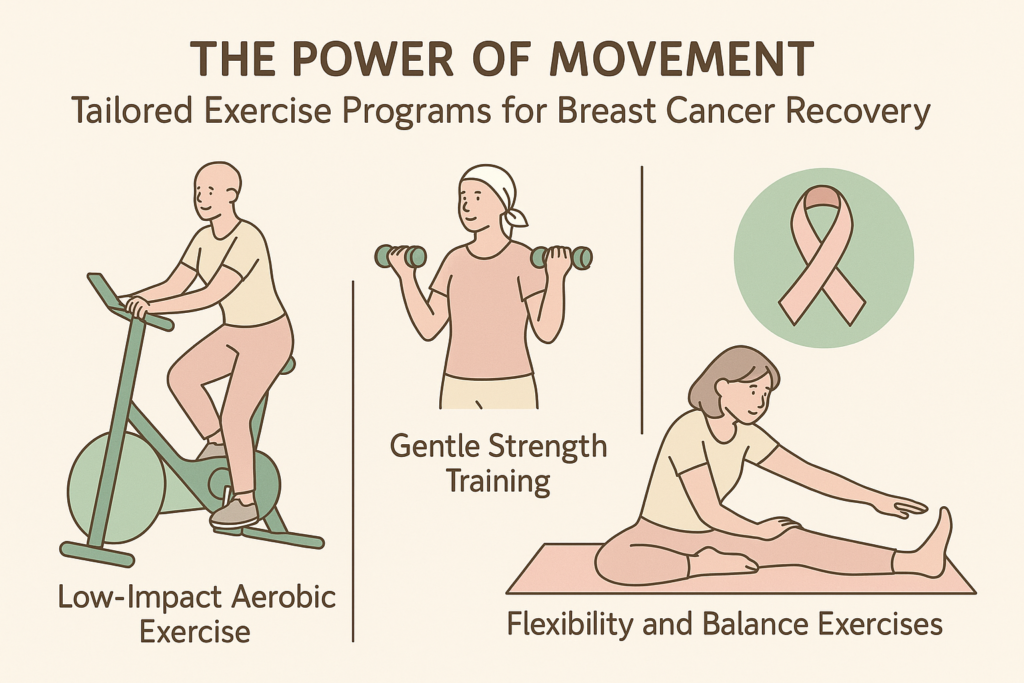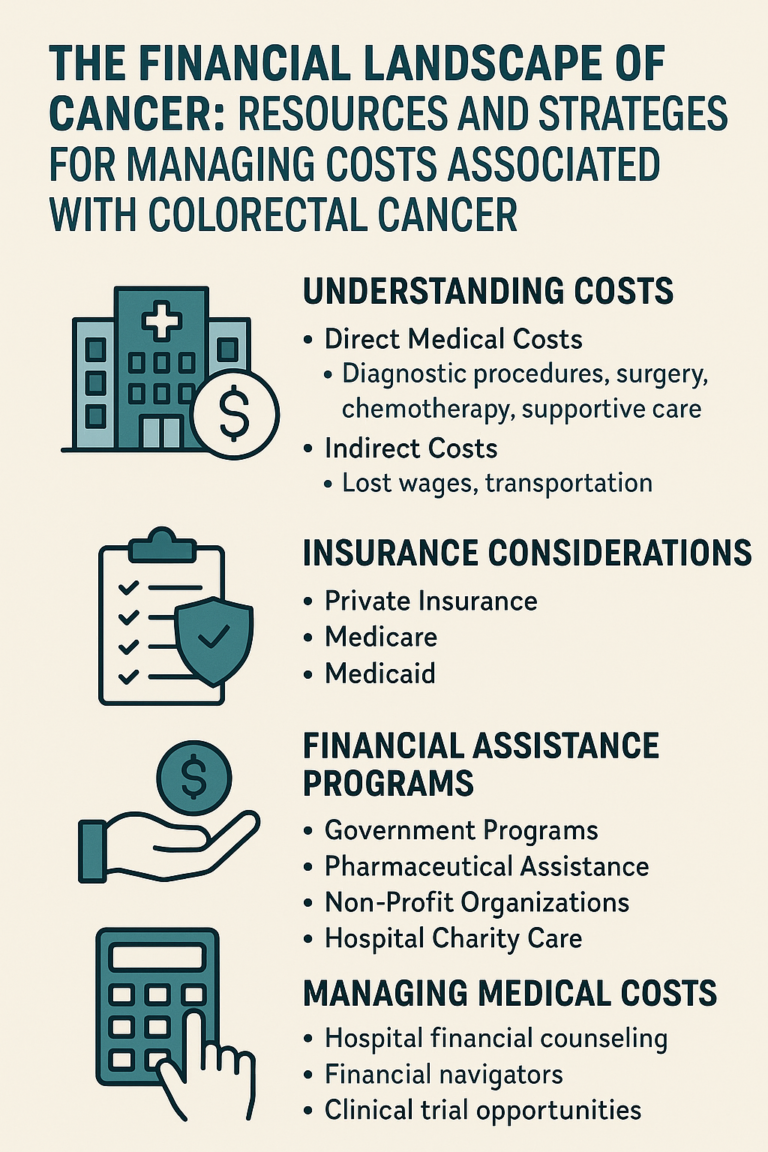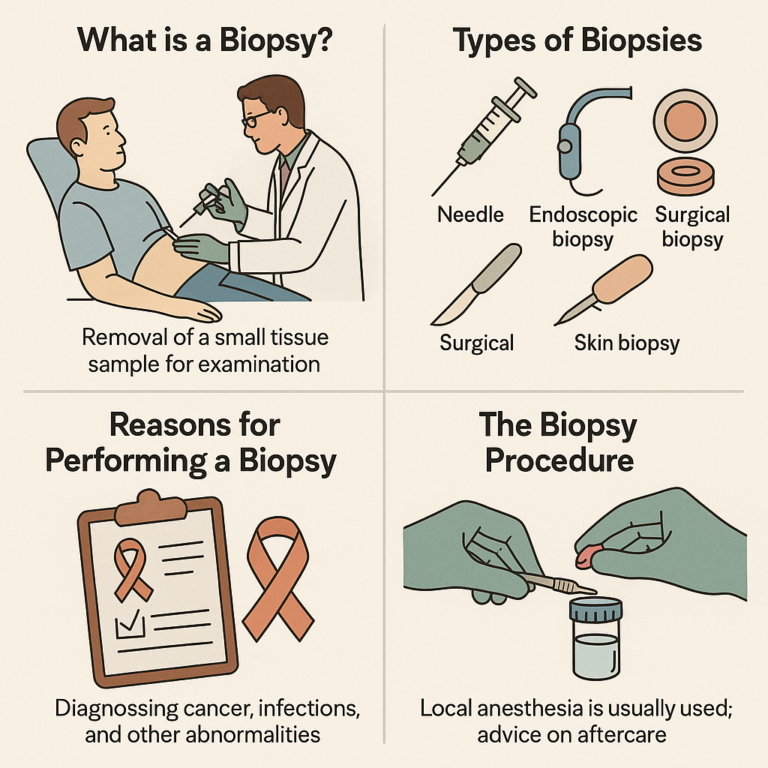Book Appointment Now
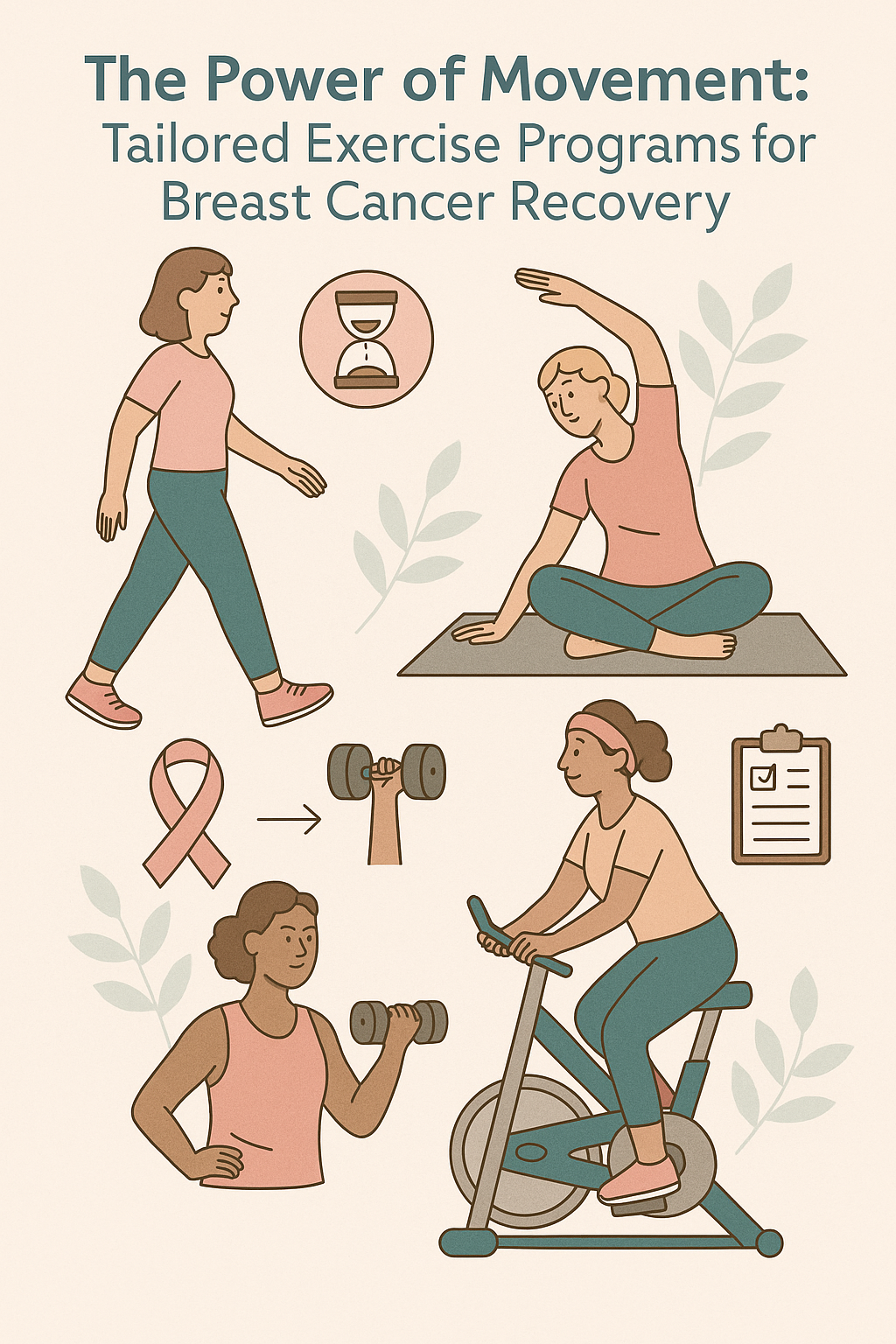
The Power of Movement: Tailored Exercise Programs for Breast Cancer Recovery
Introduction
For individuals navigating the journey of breast cancer, exercise is increasingly recognized as a vital component of both treatment and recovery. Gone are the days of simply resting; evidence now strongly supports the numerous physical and emotional benefits of incorporating tailored physical activity into the lives of breast cancer patients and survivors.
This article will explore the crucial role of exercise in breast cancer recovery, providing examples of safe and effective exercises that can be adapted to different stages of treatment and recovery.
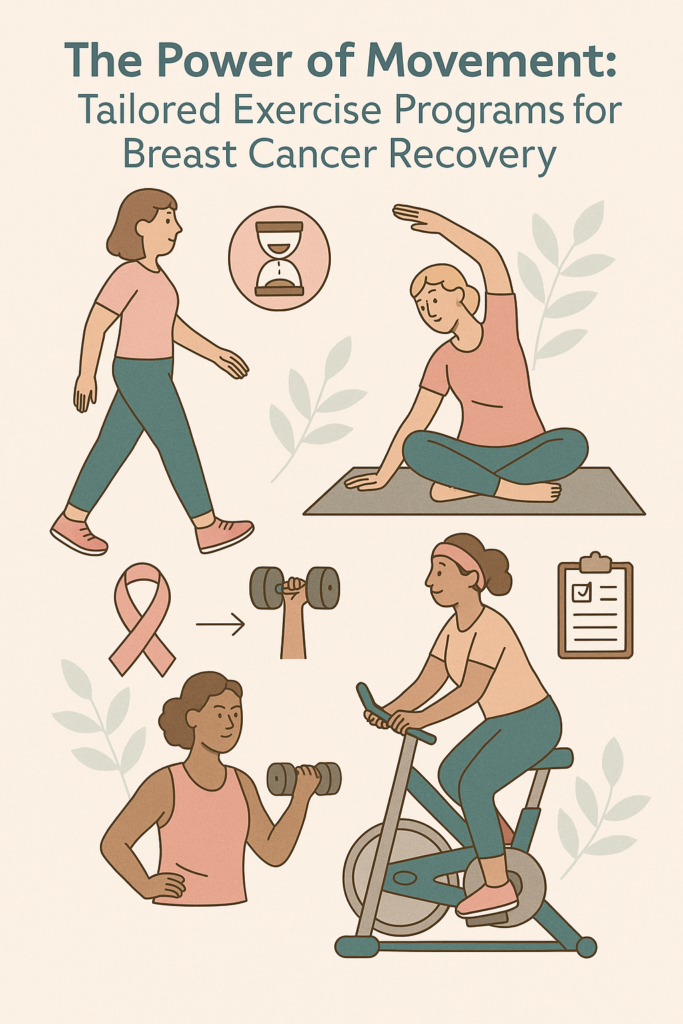
Why Exercise Matters in Breast Cancer Recovery
Engaging in regular physical activity offers a multitude of benefits for individuals with breast cancer, including:
- Reduced Fatigue: Counterintuitively, exercise can combat the persistent fatigue often associated with cancer and its treatments.
- Improved Physical Function: Exercise can help maintain and improve muscle strength, flexibility, balance, and overall physical function, which may be affected by surgery, chemotherapy, or radiation.
- Enhanced Mood and Reduced Anxiety/Depression: Physical activity releases endorphins, which have mood-boosting effects and can help alleviate anxiety and depression.
- Better Sleep Quality: Regular exercise can contribute to more restful sleep.
- Weight Management: Maintaining a healthy weight can reduce the risk of recurrence and improve overall health.
- Improved Bone Health: Weight-bearing exercises can help maintain bone density, which can be compromised by certain breast cancer treatments.
- Reduced Risk of Lymphedema: While historically there were concerns, appropriate exercise, under guidance, can actually help manage and potentially reduce the risk of lymphedema in some individuals.
- Increased Quality of Life: Overall, exercise can empower survivors to regain a sense of control and improve their overall quality of life.
Tailoring Exercise Programs to the Stage of Recovery
It’s crucial to understand that exercise programs should be individualized and adapted to the specific stage of treatment and recovery, as well as the individual’s fitness level and any treatment-related side effects. Always consult with your oncologist and a qualified physical therapist or exercise specialist experienced in oncology before starting any new exercise program.
Examples of Safe and Effective Exercises
Here are some examples of exercise categories and specific activities that can be beneficial at different stages:
During Active Treatment (with medical approval and modifications):
- Low-Impact Aerobic Exercise:
- Walking: Start with short, gentle walks and gradually increase duration and intensity as tolerated.
- Stationary Cycling: Provides a cardiovascular workout with minimal impact on joints.
- Swimming or Water Aerobics: The buoyancy of water supports joints and can be particularly helpful for those experiencing pain or lymphedema.
- Gentle Strength Training:
- Bodyweight exercises: Squats, wall push-ups, chair stands, performed with proper form and within tolerance.
- Light resistance bands: Used for exercises targeting major muscle groups, focusing on controlled movements.
- Flexibility and Range of Motion Exercises:
- Gentle stretching: Holding stretches for 20-30 seconds, focusing on areas affected by surgery or radiation (e.g., chest, shoulders, arms).
- Yoga and Pilates (modified): Choose gentle classes specifically designed for cancer patients or survivors, focusing on mindful movement and flexibility.
Post-Treatment and Survivorship
As recovery progresses and side effects subside, the intensity and variety of exercises can gradually increase:
- Moderate-Impact Aerobic Exercise:
- Brisk walking: Increasing pace and duration.
- Cycling outdoors: If balance and energy levels allow.
- Dancing: A fun and engaging way to improve cardiovascular health.
- Progressive Strength Training:
- Using dumbbells or weight machines: Gradually increasing the weight and resistance as strength improves. Focus on all major muscle groups.
- Resistance band exercises: Progressing to higher resistance levels.
- Advanced Flexibility and Balance Exercises:
- More challenging yoga or Pilates classes: Incorporating poses that improve balance and flexibility.
- Tai Chi: A gentle form of exercise that improves balance and coordination.
Addressing Specific Concerns
- Lymphedema: Individuals at risk or with lymphedema should work with a physical therapist specializing in lymphedema management. Exercises often involve gentle, progressive resistance training combined with compression garments. Avoid strenuous activity that causes increased swelling.
- Fatigue: Listen to your body and avoid overexertion. Break down exercise into shorter sessions and gradually increase duration and intensity. Prioritize consistency over intensity, especially in the early stages.
- Pain: Choose low-impact activities and modify exercises to avoid movements that aggravate pain. Consider water-based exercise or working with a physical therapist to develop a pain-sensitive program.
The Importance of Professional Guidance
While these are general examples, it is crucial to work with healthcare professionals who understand the specific needs of breast cancer patients and survivors. A physical therapist or certified exercise specialist can:
- Assess your individual needs and limitations.
- Develop a personalized exercise program.
- Teach you proper form and technique.
- Help you progress safely and effectively.
- Monitor for any adverse effects.
Conclusion
Exercise is no longer just recommended; it’s an integral part of the recovery journey for breast cancer survivors. By embracing tailored physical activity, individuals can experience significant improvements in their physical function, emotional well-being, and overall quality of life. Remember to consult with your healthcare team and seek guidance from qualified exercise professionals to develop a safe and effective program that empowers you to move forward and thrive after breast cancer.
